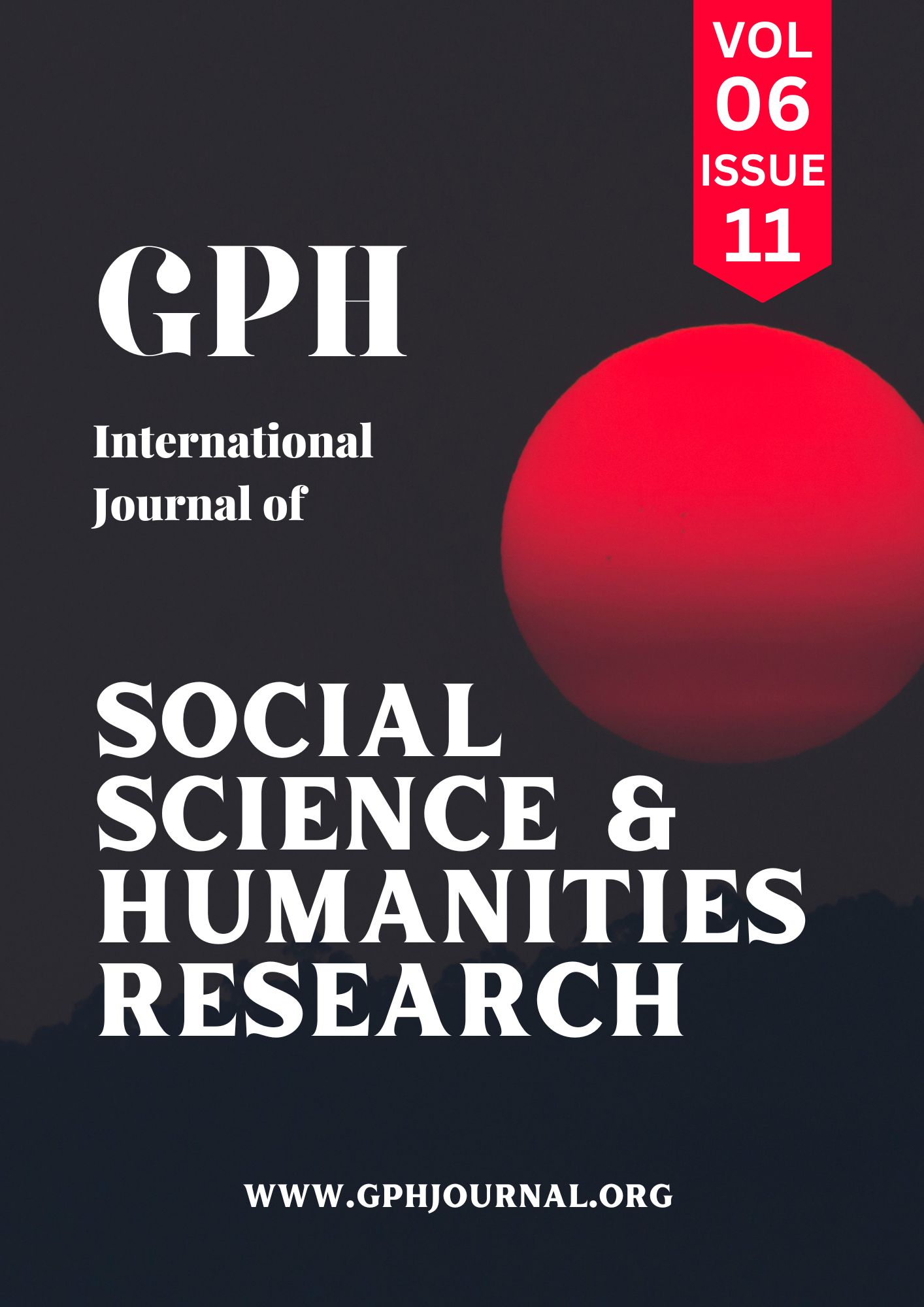EXPLORING THE USE OF RHETORIC IN PRESTIGE COSMETICS ADVERTISEMENTS
Abstract
Every advertising campaign is fundamentally persuasive and geared towards influencing the purchase decisions of individuals. Certain elements are employed to make advertisements apt, catchy and attention-attracting. One of such elements is rhetoric, the art of creating resources that are appellative, attention-attracting and persuasive. This paper, thus, aims at unpacking the intricacies of language use evident in the rhetorical techniques employed in cosmetics advertisements as apparatus for influencing and persuading individuals to making informed choices as they are being confronted daily by alternatives. The study is corpus based as it adopts a descriptive qualitative method to analyse data from 5 cosmetics advertisements sourced purposively from the wide corpora on the internet site of Prestige Cosmetics (www.prestigecosmetics.com.ng), a Nigerian cosmetic brand. Again, Knowles and Linn’s (2004) Alpha Strategies of Persuasion is adopted as a working framework to analyse the strategies that add to the persuasive imports of the advertisements. The study reveals that aside the appeals advertisements exude, strategies of making advertisements more persuasive, adding incentives, increasing source credibility, providing concensus information, emphasizing consistency and commitment and engaging a norm of reciprocity are mechanics pulled by Prestige Cosmetics to heighten the persuasive undertones of advertisements. The paper then concludes that in cosmetics advertisements, rhetoric and all its composits are arts of creativity and persuasion tailored to sway the target into making purchase decisions.
Downloads
References
Ahumaraeze, C.I. & Chukwu, E. (2023). Pragmatic acts in Tara cosmetics advertisements. International Journal of Social Science and Humanities Research. 11 (2), 87-100.
Arens, W.F., Weigold, M.W. & Arens, C. (2013). Contemporary advertising and integrated marketing communication (4th Edition). Irwin: McGraw-Hill.
Bai, Z. (2018). The characteristics of language in cosmetic advertising. Theory and Practice in Language Studies. 8 (7), 841 – 847.
Bussman, H. (1996) . Routeledge dictionary of language and linguistics. G. Traunth & K. Kazzazi (Eds). New York: Routledge.
Carrol, L.B. (2010). Backpacks vS briefcases: Steps towards rhetorical analysis. In C. Lower & P. Zemliansky (Eds). Writing spaces: Reading and writing. (1), 45- 53.WAC clearinghouse: Parlor press.
Chetia, B. (2015) Rhetorical devices in English advertisement texts in India: A descriptive study. International Journal of Social Science and Humanity .I5 (11), 980-985.
Chiavenato, I. (2006). Introduction to the general theory of administration (7th edition): McGraw-Hill: Interamericana.
Chukwu, E. & Ahumaraeze, C. I. (2022). Unpacking semiotic resources in cosmetic advertisements. GPH-International Journal of Social Science and Humanities Research. 5(5), 64-80.
Cockroft, R. & Cockroft, S. (2014). Persuading people: An introduction to rhetoric. (3rd edition). United Kingdom: Palgrave Macmillan.
Cook, G. (1992). The discourse of advertising. London: Routledge.
Corbett, E. P. J. & Connors, R. J. (1999). Classical rhetoric for the modern student (4th edition). New York: Oxford University Press.
De Fonseca, M. (2000). Oral communication: Fundamentals and strategic practice. Mexico City, Mexico: Editorial Pearson Education.
Doan, V. X. (2017). Rhetoric in advertising. Journal of Science, Policy and Management Studies. 33 (2), 30-35.
Hernández, A., and Garay, O. (2005). Communication in the sport context. Wanceulen Editorial Deportiva, S.L.
Knowles, E. S. & Linn, J. A. (2004). The importance of resistance to persuasion. In E. S. Knowles & J. A. Linn (Eds.). Resistance and persuasion. ( 3-9). Lawrence Erlbaum Associates Publishers.
Kretzer, K. (2014). Rhetorical analysis on beauty commercial. Retrieved from https://sites,psv.edu 20 June, 2021on June 15,2021.
Leech, G. (1966). English in advertising. London: Longman.
Mzoughi, N & Abdelhak, S. (2012). Visual rhetoric in advertising: Impact of emotion and attitudes. International Journal of Business and Management Studies. 1(3), 413-422.
Nordquist, R. (2020a). Examples of visual rhetorical: The persuasive use of image. Retrieved from www.thoughtco.com/visual- rhetoric116925al on June 30, 2021.
(2020b). Hypophora (rhetoric). Retrieved from www.thoughtco.com/hypophora-rhetoric on June 30, 2021.
Pizzaro, A.D. (nd). Language in the word of marketing. Retrieved from www.rome business school.com/blog/language-world-marketing-advertising> on 15 June, 2021.
Robins, R. H. & Crystal, D. (2022). Language. Encyclopedia Britannica. Retrieved from https://www.britannica.com/topic/language on 20 January 2023.
Sandage, C. H., Fryburger, V. & Rotzoll, K. (1989). Advertising theory and practice. George Town: Addison-Wesley Longman Ltd.
Schramm, W. (1988). The story of human communication: Cave painting to microchip. New York: Harper and Row.
Shah, M.I & Sahar, N. (2019). A critical discourse analysis of rhetorical devices used in advertisement of beauty products in Pakistani Print Media. New Media and Mass Communication. 77. 17-28.
Shi, J. (2021). On the application of rhetorical devices to cosmetic advertising. Open Access Journal of Modern Linguistics. 11, 315 – 32.
Websters Third New International Dictionary (1993).
Widyahening, C. E.T & Hum, M. (2015). The role of language in advertising. Retrieved from www.media. neliti.com/media/publications/6.9682 –EN –the-role-of-language-in-advertising-pdf on 30 June 2021.
Zhaojing. L. (1991). English for advertising. Beijing. Foreign language teaching and research press.
Zhoa, X. (2020). A variable-based typology and a review of advertising-related persuasion research during the 1990s. In J. Dillard and M. Pfau (Eds). The persuasion hand: Development in theory and practice. 495-512. London: Sage.
Copyright (c) 2023 CHINWE INNOCENTIA AHUMARAEZE

This work is licensed under a Creative Commons Attribution-NonCommercial-NoDerivatives 4.0 International License.
The authors and co-authors warrant that the article is their original work, does not infringe any copyright, and has not been published elsewhere. By submitting the article to GPH-International Journal of Social Science and Humanities Research, the authors agree that the journal has the right to retract or remove the article in case of proven ethical misconduct.














 Firozpur Jhirka, Haryana, India
Firozpur Jhirka, Haryana, India

